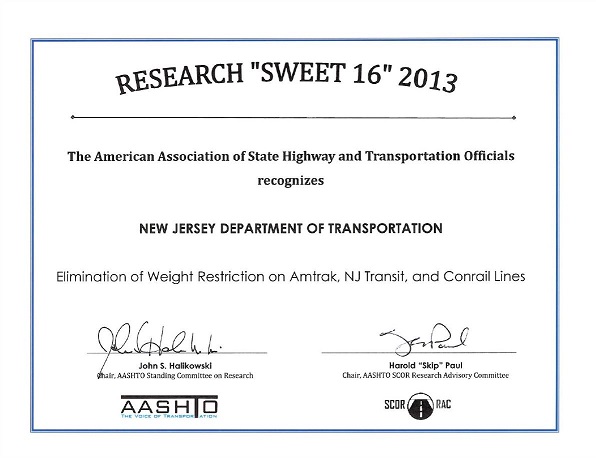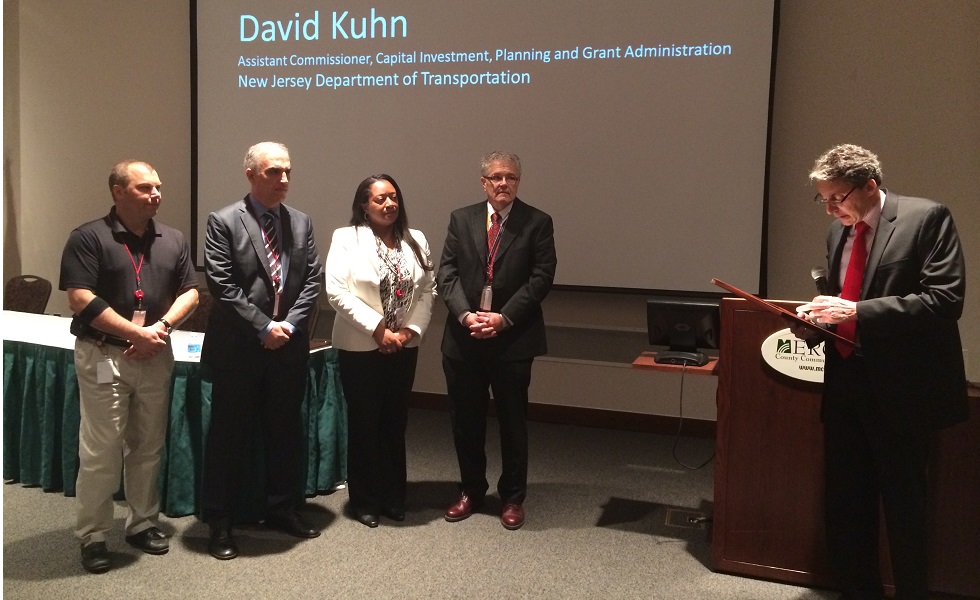Main menu
You are here
Dr. Hani Nassif (RIME Group) and NJDOT Win 2013 AASHTO High Value Research "Sweet Sixteen” Award
Updated on 11/05/2013
Certification of the AASHTO High Value Research Award

Updated on 10/23/2013
The honor was presented to Dr. Hani Nassif (Rutgers), Camille Crichton-Summers, Edward Kondrath and Paul Truban (NJDOT) by Assistant Commissioner of NJDOT, David Kuhn during the 15th Annual NJDOT Research Showcase.

Date: on 7/6/13
Dr. Hani Nassif and the RIME Group received an award for the 2013 Research Showcase Implementation Award at the AASHTO Research Advisory Committee (RAC) Meeting in Baton Rouge, LA, on Tuesday, July 16, 2013. His project titled: "Elimination of Weight Restriction on Amtrak, NJ Transit, and Conrail Line", funded by the New Jersey Department of Transportation was one of the sixteen projects out of more than 100 that were selected for the 2013 High Value Research Award by the AASHTO RAC. Professor Nassif and NJDOT Research Bureau Project Manager, Ed Kondrath, were formally invited to present this "Sweet Sixteen" project at the 2014 Annual TRB meeting, in Washington, D.C.
Project Title: Elimination of Weight Restriction on Amtrak, NJ Transit, and Conrail Line
Project PI: Hani Nassif, PhD, PE
Project Co-PIs: Kaan Ozbay and Harry Capers, Jr.
Students/Researchers: Peng Lou, Dan Su, Shri Iyer, Megan Valeo, Etkin Kara
Abstract: The Association of American Railroads (AAR) declared an increase in freight railcar weight limits from 1,170 kN (263,000 lb) to 1,272 kN (286,000 lb). The primary objective of this study is to evaluate current conditions of selected railroad bridges and to load rate them according to the AREMA provisions under 286‐kip rail cars. The Rutgers Team conducted a benefits analysis for raising the weight restriction on the NJ Transit HX Drawbridge to 286,000 pounds using available data. Currently, the bridge only supports weights of 263,000 pounds per rail car, and raising this restriction is expected to result in an increase in the weights transported by freight rail cars using this line. The economic results show a potential benefit of up to $7.49 million over 25 years.
